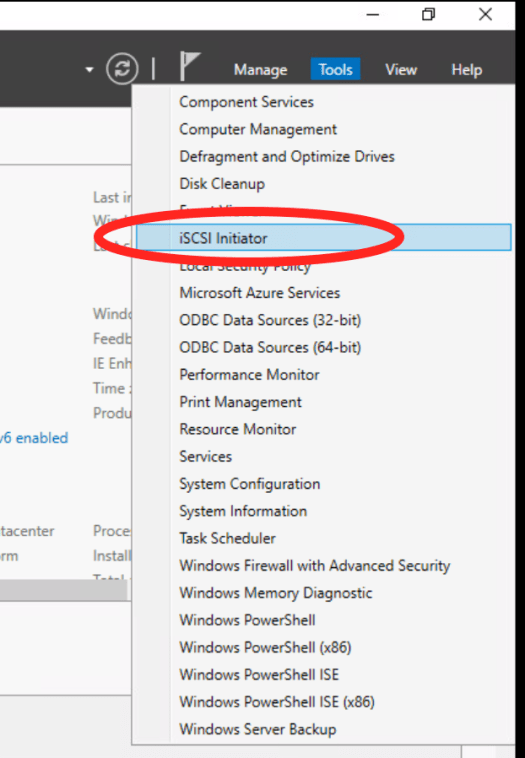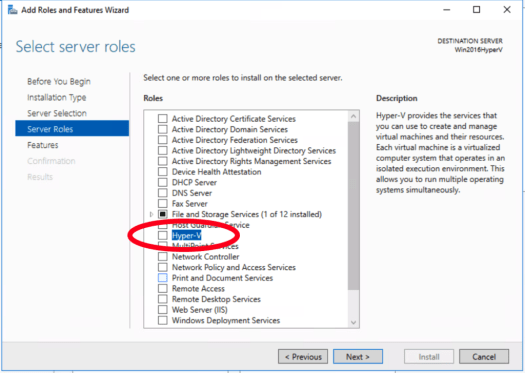In a previous post I went through a list of my personal favorite features in vSphere 6.5. VMware vSAN is on of them, it’s a storage solution that handles your virtual machines – amongst others as we shall see today.
One of the nicest features introduced for vSAN in vSphere 6.5 is the ability to attach physical servers to the vSAN cluster. By letting the vSAN handle the iSCSI volume, since it’s just another object in the vSAN, you can apply the same policies on that volume as you do on the vSAN datastore used for you virtual machines. And that means you’re able to manage the performance and/or availability, not just when initially setting up the volume but any time the requirements change for the volume you’re able to adapt.
So is it hard setting up vSAN with iSCSI targets and attaching physical servers to it? Not at all, it’s quite easy actually. Let me show you how easy it is. But first we have to create a vSphere cluster with vSAN enabled and configured. Now, I’m a big fan of PowerCLI and automating a lab environment set-up is thanks to William Lam a breeze. I’ve adjusted his script slightly to allow me to select 3 different sizes of the ESXi hosts to choose from: small, medium or large. This allows me within 30 minutes to have a lab consisting of 3 ESXi hosts and a vCenter appliance up and running, configured with a cluster and vSAN enabled. The medium and large size configurations would normally be used for VMware NSX labs and demos.
It might not be the intended use case, but wouldn’t it be fun to host virtual machines from a Hyper-v environment on a vSAN? “Why?” I hear you say, no reason, just because we can!

So first thing is to execute the PowerCLI script to bring my lab environment online:
Logging on to vCenter will now show the three hosts in a cluster with a new datastore created, a vSAN datastore.

Next, we need to enable the iSCSI functionality, which is a simple process:
Enabling the Virtual SAN iSCSI target service requires some input, specifically
- Default iSCSI network to use – in a production environment you’d probably want to set up a dedicated VMkernel iSCSI interface for this.
- Default TCP port – usually no need to change this
- Default authentication – If you’d like you can set up the connection to use either None, CHAP or Mutual CHAP
- Storage Policy for the home object – Using the predefined storage policies you can have the home object that stores metadata for the iSCSI target protected for host failures
If you want, you can create a new policy with specific settings for iSCSI Targets and Home object:
The default vSAN storage policy is used.
It protects you against one host failure, to do that it will have the object placed on two different hosts. This means it will use twice the space assigned to an object/VMDK file from the vSAN datastore.
Next up, creating a target and LUN:
You create both the Target IQN (with the desired settings and policies) and a LUN. Depending on the LUN Storage Policy you are using you will consume space from the vSAN datastore accordingly:
Now the set-up of the Target and the LUN is done. It’s that simple! After this point you can attach any physical server using iSCSI to the vSAN datastore and use the resources. In my lab though, I’m going to use a virtual machine from another host to emulate a physical machine.
You probably don’t want just any old server being able to attach to the LUN, so you can configure which initiators are allowed to connect. Either use individual IQNs or create a group of IQNs.
Let’s take a look what has happened on the vSAN Datastore:
We can now clearly see that there’s a new VMDK file that we can handle just as any other VMDK file, inflate it, move it or delete it:
Next up: Creating a Windows Server 2016 VM (emulating a physical machine) that will connect and use the new vSAN LUN we created. 
Setting up the VM is pretty straight forward.
Here’s where we need to make changes, first assign at least two CPUs to the VM and secondly tick the box for hardware virtualization (otherwise the role Hyper-V won’t be able to start or be installed).
The summary page shows us what settings we’ve selected for the VM
We run through the installation of the operating system. Configure everything we need, a static IP address, updating windows and so on:
OK, Windows Server 2016 is ready to be used, let’s configure the iSCSI connection:
Yes, we’d like to start the iSCSI service:
Again, in a production environment you’d probably want to have som fancy stuff set up such as MPIO and so on but for this test we’ll just do a quick connect to the iSCSI target:
Oh, but what IP address should I use? The host that is responsible for the I/O to the LUN can be found on the configuration page of the iSCSI Target:
We connect Windows to the I/O Owner host:
We have a connection, all is well:
Open up the disk management tool and a new disk should be available (if not, try a rescan). Bring the disk online, initialize it and format it:
Now the volume is ready to be used:
Hyper-v will now be installed on the Windows Server 2016 machine:
Add the required features and tools
Configure a virtual switch for Hyper-V
Now we can actually leverage the newly created vSAN volume and use that as the target for our Hyper-V virtual machines:
A simple test to confirm that it actually works, creating a virtual machine for Hyper-V running off of the vSAN volume:
Go through the wizard, give the VM a name and so on.
Choose what generation the VM should be created as:
Select a network connection if needed
Set the size of the virtual hard disk.
Select an iso-file to be used when installing the OS in the Hyper-V virtual machine
The VM is created, start it and connect to it to get the console view
Install the operating system and update it, configure it the way you want it
Now we’re running a virtual machine in Hyper-V with it’s disk being handled by VMware vSAN! Pretty cool.
Now we can go back to see what impact, if any, installing the operating system had on consumed space on the vSAN volume:
As you can see, the VMDK file containing the Hyper-V volume has grown that’s just as we expected.
There you have it! It’s very, very easy to set up vSAN to use iSCSI – why not give it a try yourself?





You must be logged in to post a comment.